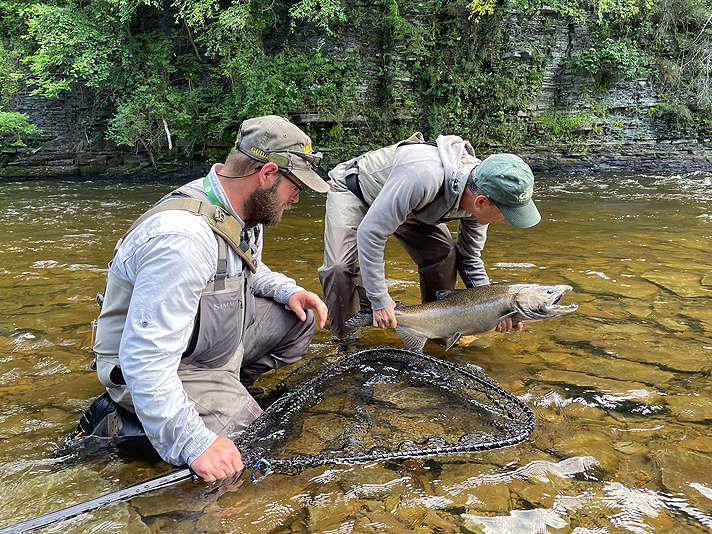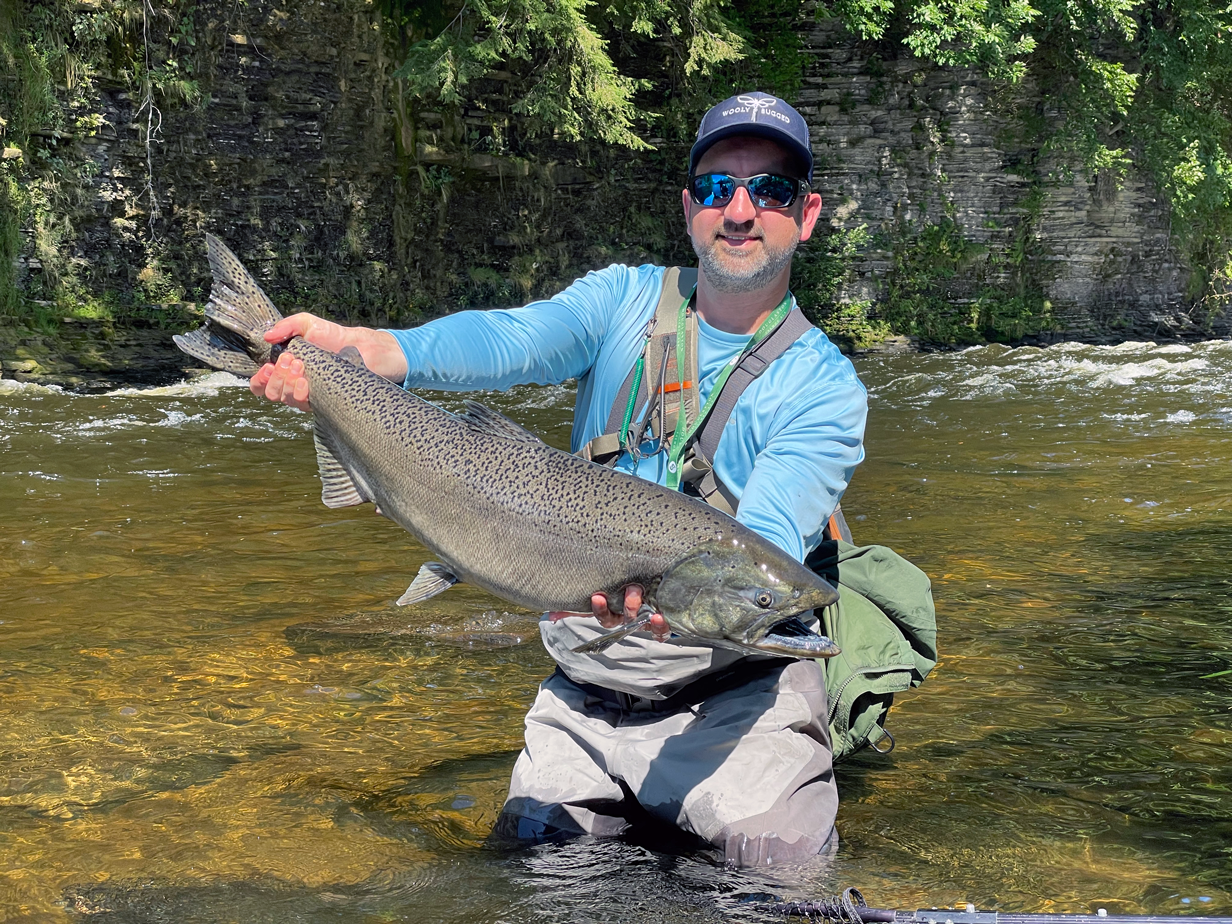I first fly fished the Salmon River in Pulaski, New York in October 2015. It remains one of my most memorable solo fishing trips. I’ll never forget the excitement I felt driving north at three in the morning wondering if I’d be successful. I caught my first King salmon on that trip and the reality is I had no idea what I was doing. I used a 9’-6wt fly rod that was good enough to swing a woolly bugger, and when I hooked that first fish, I chased it up and down the Douglaston Salmon Run for the better part of 15 minutes. When I finally worked the fish into shallow water, I was shaking as I grabbed its tail and took a picture with my iPhone.
Now six years later, I’ve been fortunate to catch dozens of King salmon on the Salmon River. I have fished with experienced salmon fishermen and guides, observed various fishing techniques and am much better equipped when I make that ride north. I still learn more every year and some days I feel like I still don’t know anything. The purpose of this post is to share some of the information I’ve gathered since my first trip to hopefully make your first trip to the Salmon River successful.
Guide Rick Smith instructing my father how to release his first salmon on a fly rod.
When To Go
The Salmon River salmon season timeline:
Early Season: Late August – Late September
Peak Season: Late September – Early October
Late Season: Early October – Mid October
The best time to fly fish for salmon on the Salmon River is mostly driven by conditions that cannot be controlled. Things like increased river flows, water and air temperatures, reproduction and stocking rates, and the availability of natural food in Lake Ontario are some of these variables. However, King and Coho salmon are fish species that spawn in the autumn of the year. When these fish reach maturity, they will begin moving in schools to shallower water in the lake throughout the summer months. They make their way to the mouth of the Salmon River, eventually working their way into the estuary. The estuary is the tidal mouth of the river, sometimes referred to as the “frog water,” or slow water that joins Lake Ontario to the Salmon River. Salmon begin entering the estuary during the month of August and their numbers steadily increase through the month of September, reaching peak numbers in late September and early October.
Fish Species & Spawning Run Timeline
When fly fishing the Salmon River, anglers may have the opportunity to catch various species of large lake run fish on one trip. The river supports spawning runs of three different species of salmon and two species of trout, and many of their spawning runs overlap. Here is a list of the individual species along with the timeframes they are typically found in the river.
The Salmon River spawning run timeline:
King Salmon: August – October
Coho Salmon: August – October
Atlantic Salmon: July – October
Steelhead Trout: October – April
Brown Trout: October – April
The above fish species are part of New York state’s stocking program, and many are raised from the eggs of wild broodstock, collected annually at the Salmon River Hatchery in Altmar, New York. Once fish are raised to fingerling and yearling age, thousands of them are stocked in tributaries across western New York, including the Salmon River. When young fish are introduced to these streams, a process of imprinting happens. Although science doesn’t have all the answers yet, the thinking is that the fish imprint the Earth’s magnetic field from the body of water where they were introduced. This imprint, which includes scents of the home river, are used to help them find their way home to spawn once they’ve reached maturity in Lake Ontario. Read more about fish being imprinted here.
Wooly Bugged with a fresh female King salmon that may have been born in the Salmon River.
Another interesting fact that many anglers aren’t aware of is that a large percentage of King salmon caught on the Salmon River are now wild. The New York Department of Environmental Conservation estimates that 70% of King salmon caught by fisherman on the Salmon River were the result of natural reproduction in the river. Read more about New York’s wild King salmon population here.
Be sure to read Part 2 of this blog series where I cover the gear that I recommend, including fly rod and reel, fly line, leader, tippet, weights and accessories.


